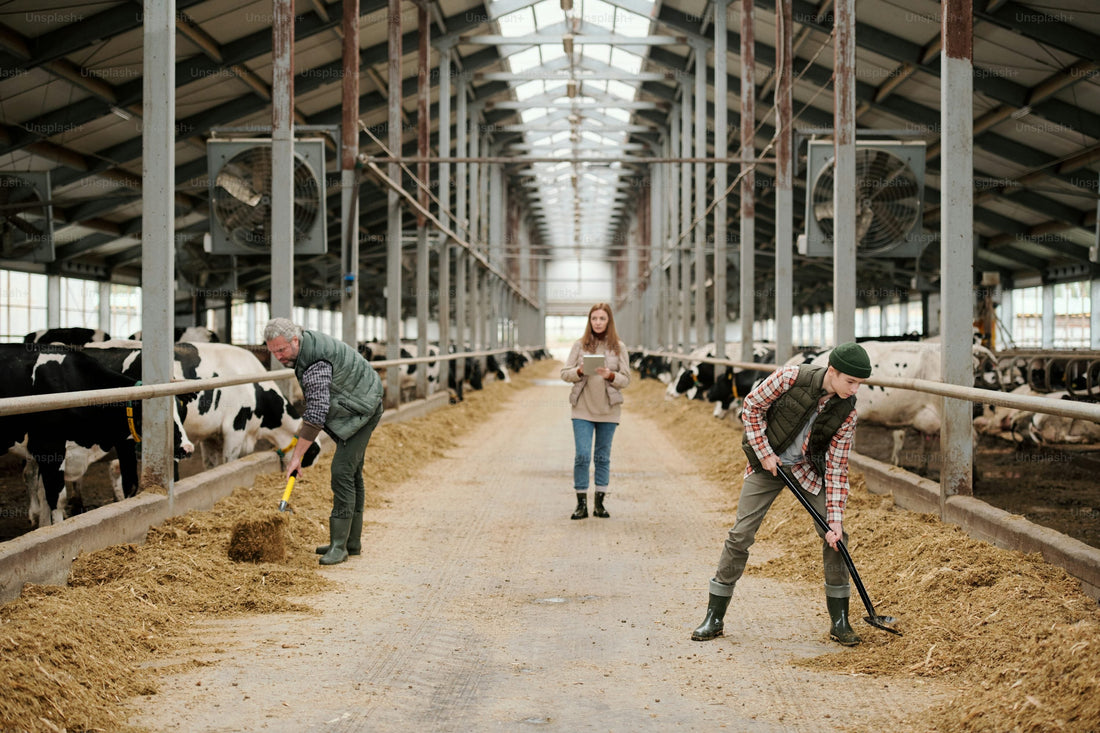
The Harsh Reality behind Running a Dairy in California- New Policies Pushing Out Generational Family Farms
Share
California has been the backbone of American dairy, producing more milk than any other state- further giving it the nickname as the “liquid gold state”.
From the sprawling Central Valley to the fog-kissed pastures of the North Coast, generations of families have worked tirelessly to keep their herds healthy and their operations sustainable. But in recent years, many of these legacy dairy farms are being driven out—not by market failure or weather—but by policy pressure.
The state’s aggressive environmental regulations and its relentless push toward organic standards are leaving conventional dairy farmers with two options: convert or close.
Regulatory Overreach Masquerading as Progress
California’s climate policies have shifted heavily toward reducing methane emissions—primarily from enteric fermentation and manure management. While climate stewardship is undeniably important, the rollout has been devastatingly one-sided.
Small to mid-sized dairies are being forced to invest in anaerobic digesters, lagoon covers, and advanced methane capture technologies. These capital-intensive mandates can cost hundreds of thousands of dollars—investments that most family-run dairies cannot afford.
In parallel, Assembly Bills like AB 1783 are driving the expansion of “climate-smart” agriculture, which heavily favors organic operations and carbon-neutral certification. Funding and subsidies flow toward certified organic producers, while conventional dairy operations are excluded from grant programs and face mounting scrutiny over synthetic feed additives, antibiotic use, and water runoff.
The Pressure to Go Organic—At Any Cost
Organic dairying, in theory, sounds like a win: clean feed, no antibiotics, pasture access. But in practice, the transition isn’t so simple. The USDA National Organic Program requires a full-year conversion period, meaning cows must be fed 100% organic feed and receive no prohibited substances—while their milk still sells at conventional prices.
In the feedlot, switching from a total mixed ration (TMR) optimized with genetically enhanced silage and protein-rich supplements to organic alfalfa or grass-based diets can drastically reduce milk yield per cow. For breeds like Holsteins, bred for high-volume output, this is a serious economic setback.
Moreover, land designated for pasture must meet organic certification standards, which limits herbicide use and increases labor costs for weed and pest management. Many dairy producers simply do not have the acreage or water rights to make this feasible.
Big Ag Wins, Family Farms Lose
Ironically, the largest organic dairy operations in the state are owned by vertically integrated agribusinesses with out-of-state funding. These mega-dairies can afford to install methane digesters, apply for carbon credits, and hire full-time compliance officers.
Meanwhile, fourth-generation dairymen and women find themselves unable to meet organic criteria—or afford the legal and logistical maze of converting. As a result, they sell off their herds, lease their land, or shut down entirely.
The disappearance of these dairies doesn’t just affect milk production; it impacts rural economies, feed suppliers, hay growers, veterinarians, truck drivers, and local schools. The ripple effect is massive.
A Call for Balanced Reform
California’s leadership in sustainable agriculture is admirable, but the current approach is punishing the very people who built the state’s dairy legacy. We must advocate for:
-
Transitional support for conventional dairies that want to become organic without financial ruin.
-
Flexible methane reduction targets that scale based on herd size and profit margins.
-
Recognition of regenerative practices outside of the strict USDA Organic framework.
Dairy farming is not a one-size-fits-all industry. California needs to embrace a more inclusive model—one that honors both innovation and tradition.
Until then, the state’s dairy heartland continues to shrink, not from drought or disease, but from bureaucratic erosion.
#CaliforniaDairyCrisis #OrganicFarmingPressure #AgriculturalPolicy #FamilyFarms #SustainableFarming #MethaneRegulations #DairyIndustryNews